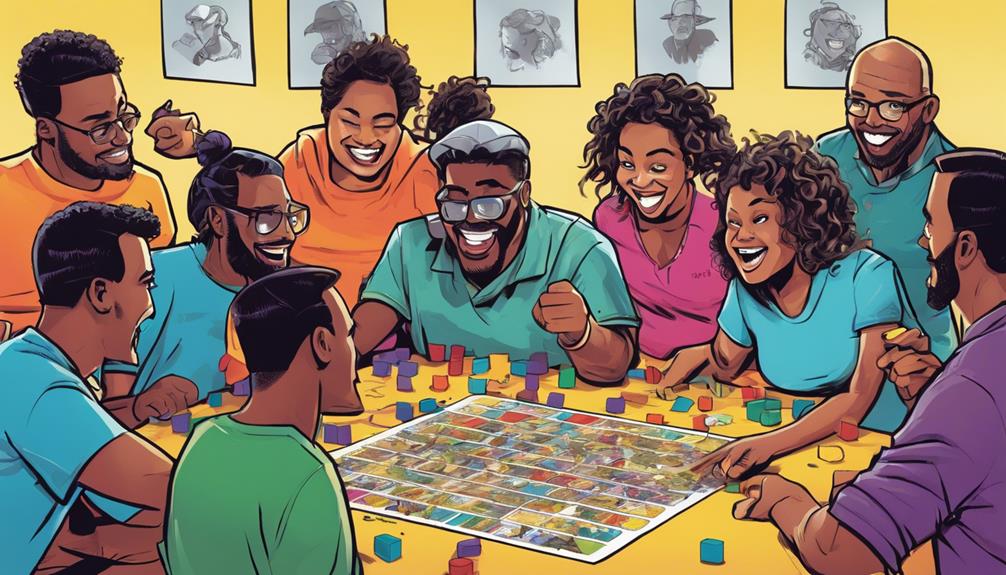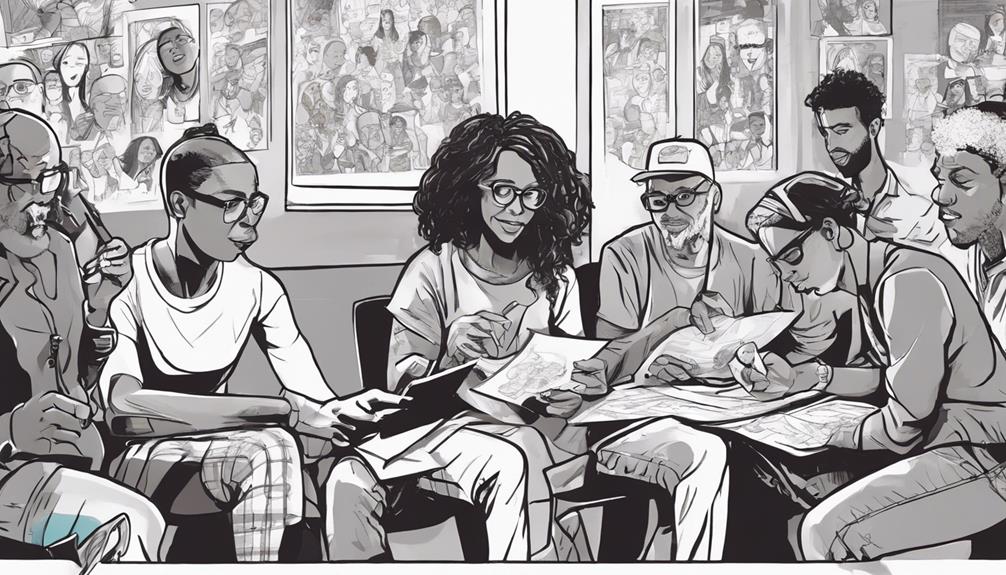Boost your creativity and innovation with design thinking games. Engage in the Fruit Party Innovation Game for collaborative creativity. Immerse yourself in idea generation, feedback activities, and user-centered role-play scenarios. Embrace prototyping challenges for innovative solutions. Stimulate visual thinking and explore ideas with non-linear creativity. These games will elevate your problem-solving skills and push you to think outside the box.
Key Takeaways
- Engage in visual thinking and idea exploration activities for innovative solutions.
- Foster collaboration through rapid idea generation and constructive feedback.
- Embrace failure as a learning opportunity in prototyping challenges.
- Immerse in user-centered role-play scenarios for valuable insights.
- Explore the world of Fruit Party game to stimulate creativity and uniqueness.
Fruit Party Innovation Game
Explore the innovative world of the Fruit Party game, a design thinking activity that challenges teams to create unique fruit combinations.
By fostering collaboration and creativity among participants, this game encourages exploration of different design elements to produce innovative outcomes.
With a focus on uniqueness, Fruit Party pushes teams to think outside the box and come up with creative solutions by selecting fruits based on specific criteria such as color, size, cost, and flavor.
Suitable for groups ranging from 15 to 50 individuals, this game provides a platform for team members to work together in a fun and engaging manner while honing their design thinking skills.
Through the process of mixing and matching ideas, Fruit Party stimulates innovative thinking and promotes a collaborative environment where participants can experiment with various fruit combinations to achieve unexpected and inventive results.
Idea Generation and Feedback Activities
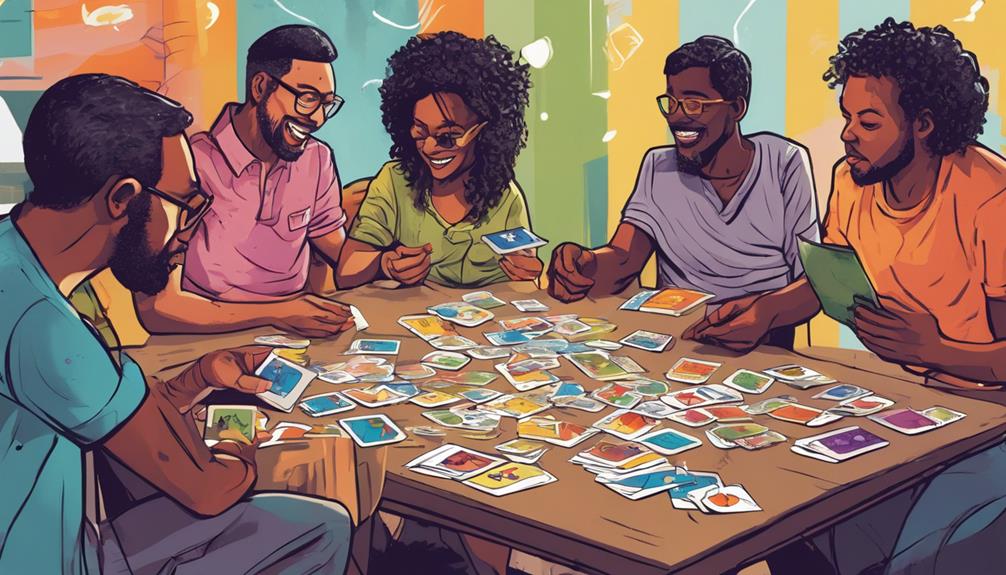
Join the innovative world of Idea Generation and Feedback Activities, where rapid idea generation and constructive feedback drive collaboration and creativity.
In these design thinking games, teams engage in activities like Idea Speed Dating to promote quick thinking and creative ideation in a collaborative setting. Through open communication and exploring diverse perspectives, participants refine their ideas and build a culture of innovation.
These activities encourage participants to step outside their comfort zones and share their ideas freely, fostering a supportive environment for idea exchange. Facilitators play an essential role in guiding discussions to make sure that feedback is constructive and ideas are effectively refined.
By creating a space where ideas flow freely and feedback is valued, these activities help teams enhance their creative thinking skills and develop innovative solutions to challenges.
Embracing a culture of open communication and collaboration, these idea generation and feedback activities pave the way for groundbreaking innovations in the domain of design thinking.
Prototyping and Learning Challenges
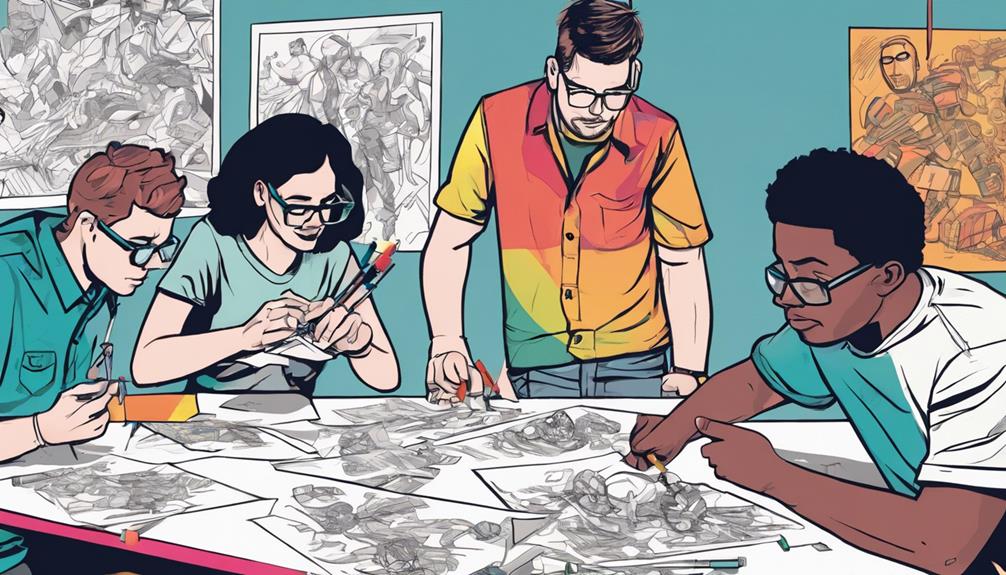
In the world of design thinking games, moving through Prototyping and Learning Challenges requires teams to embrace rapid iteration and failure as part of the creative process. Games like the Marshmallow Challenge and Prototyping Relay emphasize the importance of rapid prototyping, collaboration, and continuous improvement.
Through these activities, teams learn the value of learning through failure as a pathway to innovative thinking and creative solutions.
During these challenges, clear problem statements play an essential role in guiding teams towards effective prototyping and iteration. Open communication and constructive feedback foster a culture where cross-functional teamwork thrives, leading to more robust solutions.
Facilitators are instrumental in ensuring adherence to rules, leading debrief sessions, and instilling a mindset where failure is seen as a learning opportunity.
User-Centered Role-Play Scenarios
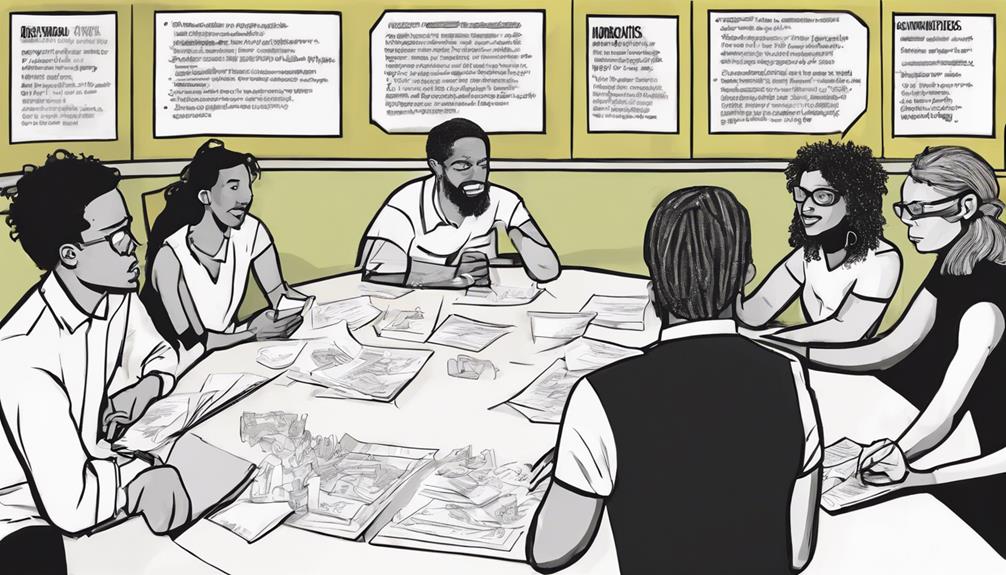
Moving from the domain of Prototyping and Learning Challenges, user-centered role-play scenarios in design thinking enable participants to immerse themselves in user experiences and challenges. These role-play scenarios encourage participants to explore user-centered role-play exercises, fostering creativity and a human-centered approach to design.
By engaging in interactive role-playing, individuals gain valuable insights into user perspectives, deepening their empathy in design processes. Aligning these scenarios with real-world business challenges enhances the relevance and applicability of the exercises, further emphasizing the importance of understanding user needs in problem-solving.
Through these user-centered role-play scenarios, participants are able to step into the shoes of the users, experiencing firsthand the challenges and opportunities that come with a human-centered design approach. This immersive experience not only sparks creativity but also cultivates a deeper understanding of how to address user needs effectively in the design thinking process.
Visual Thinking and Idea Exploration Games
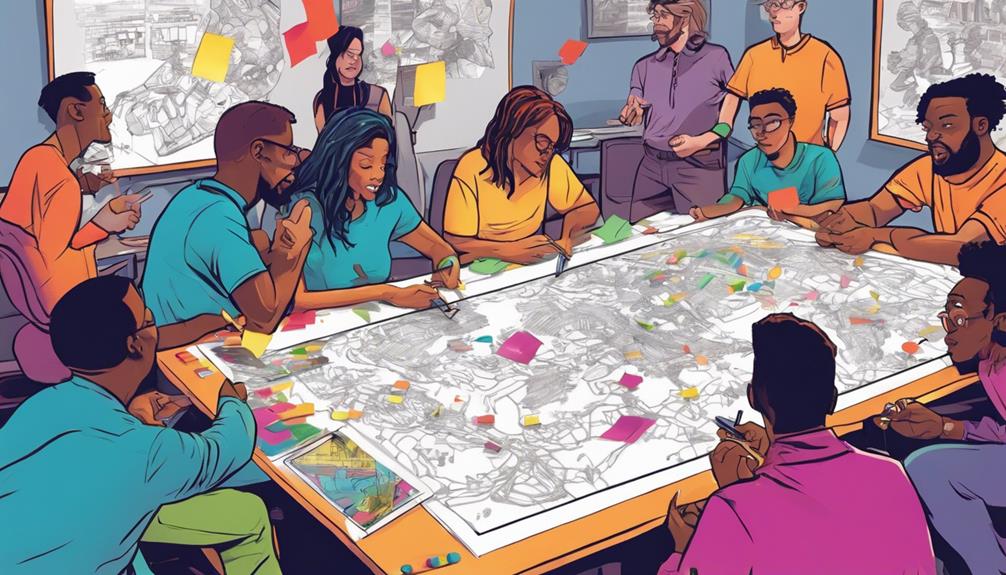
Engage your team's creativity and innovation through visual thinking and idea exploration games. Visual thinking games, such as Mind Mapping Madness, are designed to stimulate innovative solutions by encouraging participants to create visual diagrams. These games not only enhance creativity but also promote idea exploration by helping individuals think spatially and identify new opportunities.
By emphasizing non-linear thinking and the exploration of unexpected connections, mind mapping games push teams to think outside the box and generate fresh ideas.
During these games, participants engage in discussions to share insights gained from creating mind maps, fostering a collaborative environment that nurtures creative problem-solving. Through the visualization of concepts and their relationships, visual thinking games enable teams to unravel their full creative potential and push boundaries in idea generation.
Frequently Asked Questions
How Do You Use Design Thinking to Generate Innovative Ideas?
To generate innovative ideas using design thinking, you empathize with users, challenge assumptions, and understand needs deeply. By iterating, prototyping, and fostering a user-centered approach, you can boost creativity and drive innovation effectively.
Can Games Improve Creativity?
Games can supercharge your creativity by providing a fun and safe space to experiment, collaborate, and push boundaries. They offer a dynamic way to enhance your innovative thinking and foster fresh ideas.
What Are the Activities Pertaining to Design Thinking?
Engage in activities like Idea Speed Dating, Role-Play Scenarios, Mind Mapping Madness, and Prototyping Relay to boost creativity. These games promote rapid idea generation, visual thinking, and collaborative problem-solving, fostering innovation and user-centered approaches.
How Do You Develop Creative and Innovative Thinking?
To develop creative and innovative thinking, you explore new perspectives, embrace challenges, and experiment with ideas. Engage in brainstorming sessions, seek diverse input, and iterate on solutions. Stay open to feedback and keep refining your approach for continuous growth.
Conclusion
So, next time you're feeling stuck in a creative rut, remember to shake things up with some design thinking games! These fun and interactive activities can help spark new ideas, foster collaboration, and push the boundaries of innovation.
After all, a little creativity goes a long way in keeping the creative juices flowing. So why not give it a shot and see where the chips fall?
The sky's the limit when it comes to boosting your creativity and innovation!
